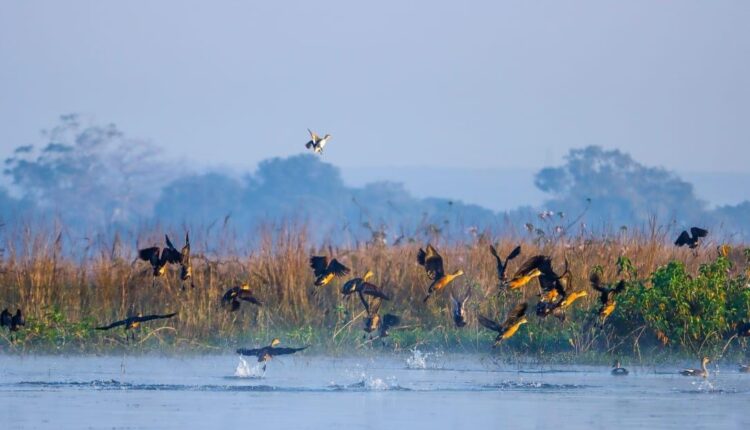Odisha’s Hirakud Dam sees record 3 lakh avian guests in bird census
Official sources said total 3,16,676 birds from 108 species were sighted in the reservoir and the number saw a hike by over one lakh as compared to the census in 2022.
Sambalpur: In a delight for ornithophiles, Odisha’s Hirakud Dam saw a record increase in avian guests as the figure touched three lakh in the recently concluded bird census at the reservoir. The counting exercise was carried out across the water body spanning across Sambalpur, Bargarh and Jharsuguda and divided into 15 sectors for the purpose. Official sources said total 3,16,676 birds from 108 species were sighted in the reservoir and the number saw a hike by over one lakh as compared to the census in 2022.
Among the 10 new species which were first time visitors were painted stork, yellow-billed duck, woolly-necked stork, bar-tailed godwit, pied harrier, curlew sandpiper, cotton pgymy goose, caspian tern, blue tailed bee-eater, crested serpent eagle. Among the avian species which were sighted in large numbers were lesser whistling duck (66,712), tufted duck (44,820) and common coot (34,680). These three species accounted for over 1.46 lakh bird population sighted during the census. Among other popular species were skimmer, crested grebe, darter, cormorant, pochard, etc.
Maximum sighting was recorded from sector 6 on the Odisha-Chattisgarh border where 85,216 birds of 66 species were seen. This was followed by sector 5 of Govindpur in Bargarh where 75,275 birds of 65 species were recorded and then sector 7 of Jharpada in Jharsuguda where the avian headcount was 40,372 from 48 species. These three sectors accounted for nearly 2 lakh bird migratory bird population.
Commenting on the census, Hirakud Wildlife Division DFO Anshu Pragyan Das said a team of experts and forest personnel carried out the exercise. This year saw a record increase in migratory birds visiting the Hirakud reservoir, a recently announced Ramsar site.
In 2020, the bird census at Hirakud stood at 97,899 (93 species) followed by 1,24,864 (98 species) in 2021 and 2,08,634 (104 species) in 2022.


Comments are closed.